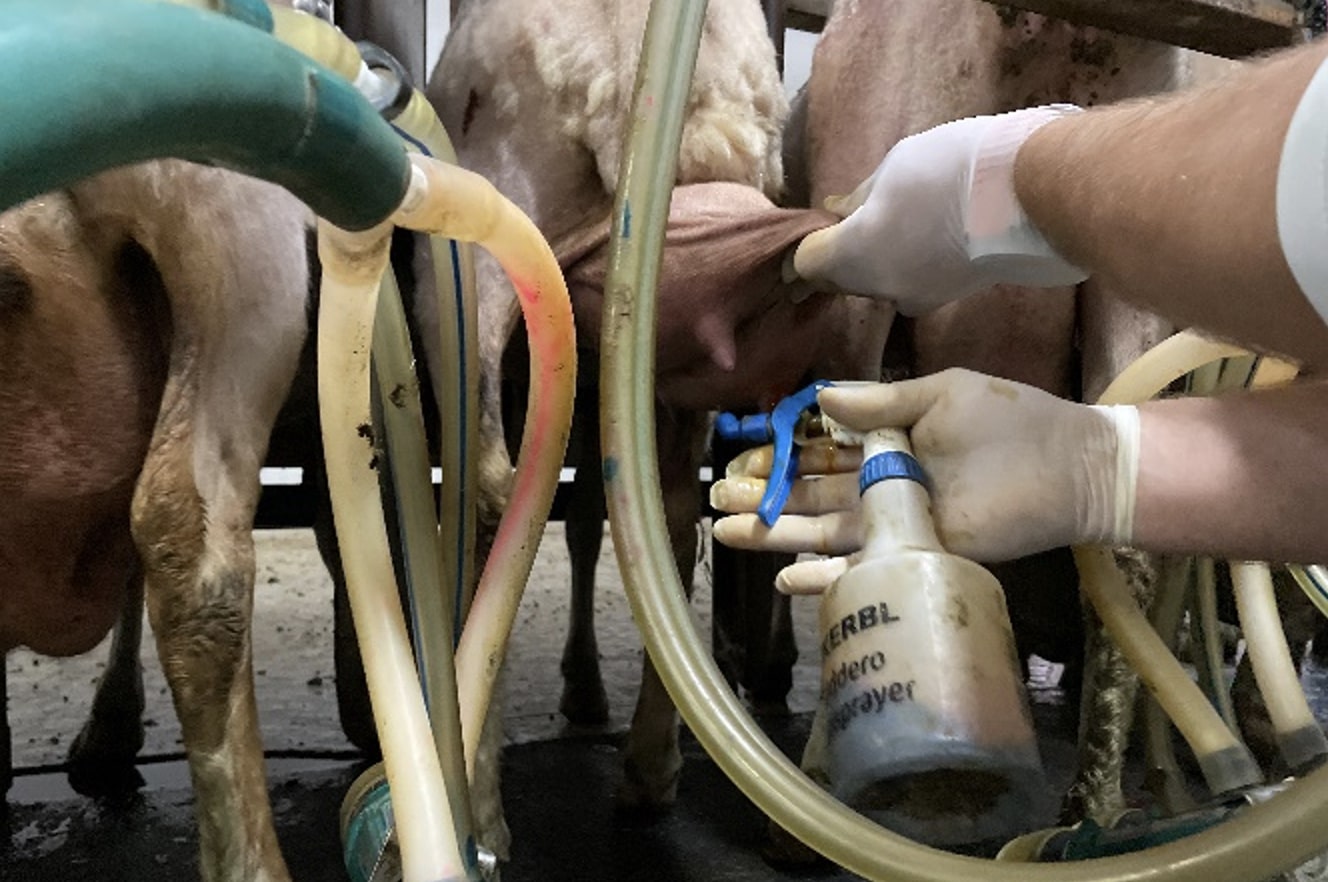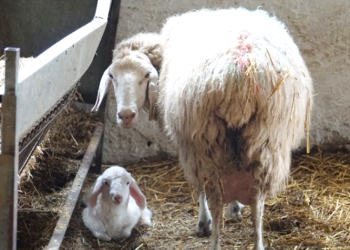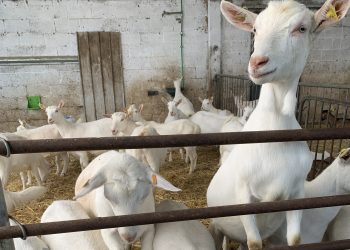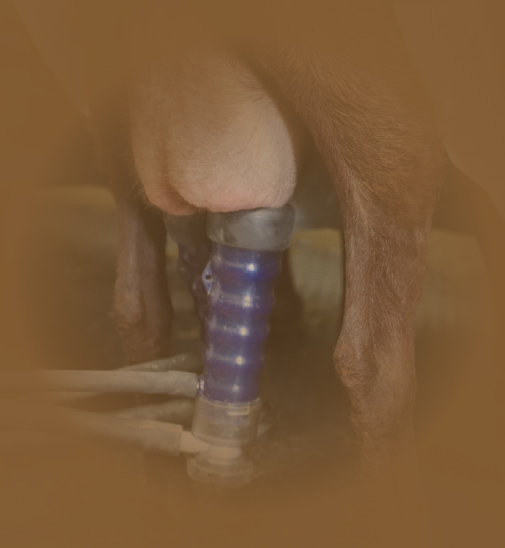Milking: a critical point
Most new cases of mastitis originate during milking. This procedure, which should be routine and safe, can become a risk factor for the transmission of infections if not performed properly.
The milking machine and routine are critical points in the transmission of mastitis.
Here are six key practices that can significantly reduce the risk of mastitis:
1. Milking order
An order should be followed that minimises the risk of transmission of pathogens from infected to healthy animals.
Newly freshened animals are more vulnerable and should be milked first. Then the healthy animals should follow, leaving those that show signs of illness for last.
2. Maintain good hygiene
Hygiene is the basis of mastitis prevention. Gloves should be worn during milking and changed regularly.
The cleanliness of the milking machine should also be checked, from the pipes to the teat cups.

3. Post-Dipping
Soaking teats in an antiseptic solution after milking is a very effective method for preventing mastitis. This step helps eliminate bacteria that may have been transmitted during milking.
Pre-dipping is less common, but is recommended as an additional measure to clean the teats before milking begins.
Poor milking practices can facilitate the entry of microorganisms through the teat canal
4. Inspect the udder before milking
Before milking it is important to examine the udder for abnormalities. Changes in texture or temperature should be monitored, as they may indicate the early stages of mastitis.
5. Avoid over-milking
Over-milking can cause injuries that increase susceptibility to infections. The vacuum should always be turned off before removing the teat cups to avoid damage to the teat ends.
6. Check the health of the teats
It is advisable to inspect the teats for signs of irritation, swelling or injury. Early detection allows for rapid treatment and prevents minor problems from turning into serious infections.
Conclusions
By following these steps, the incidence of mastitis in sheep and goat flocks can be reduced significantly. A consistent and careful milking routine protects animal health and improves milk quality and farm productivity.
Prevention is always more effective and economical than treatment




